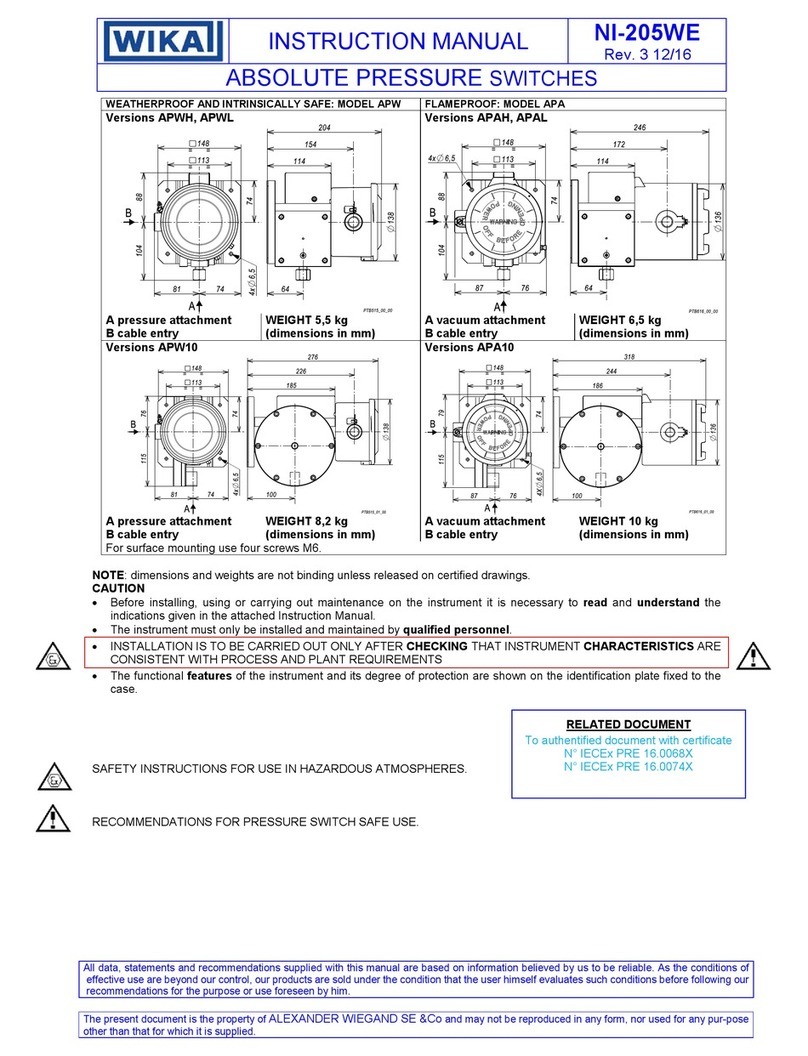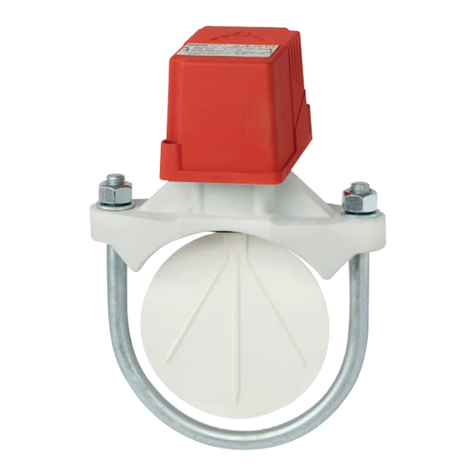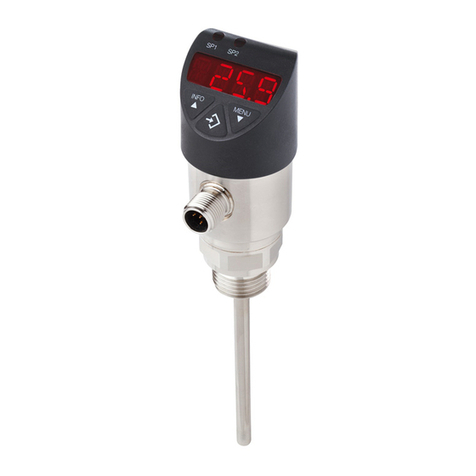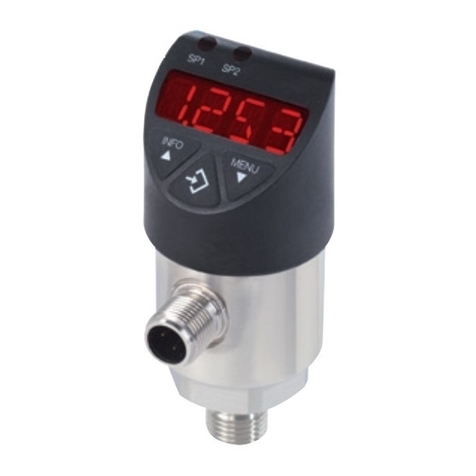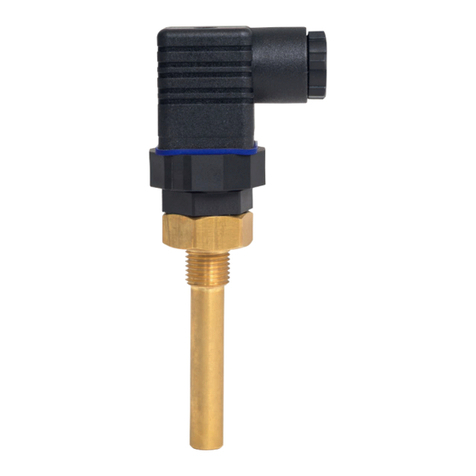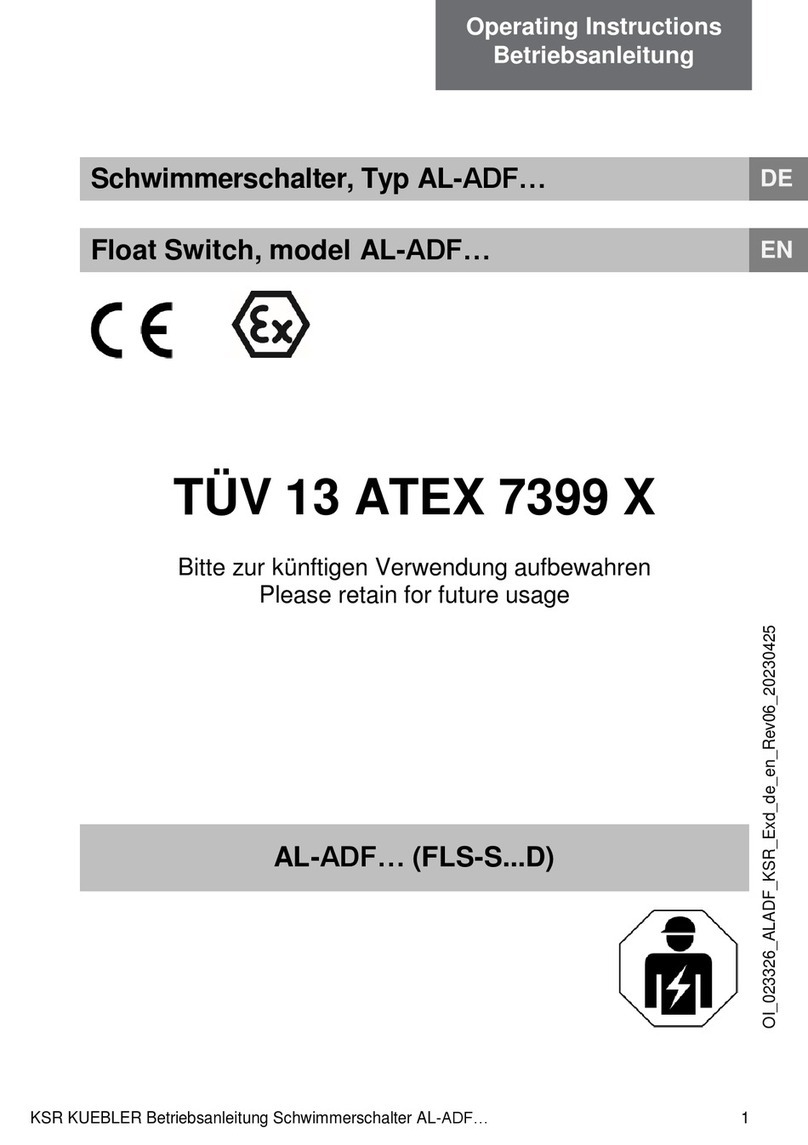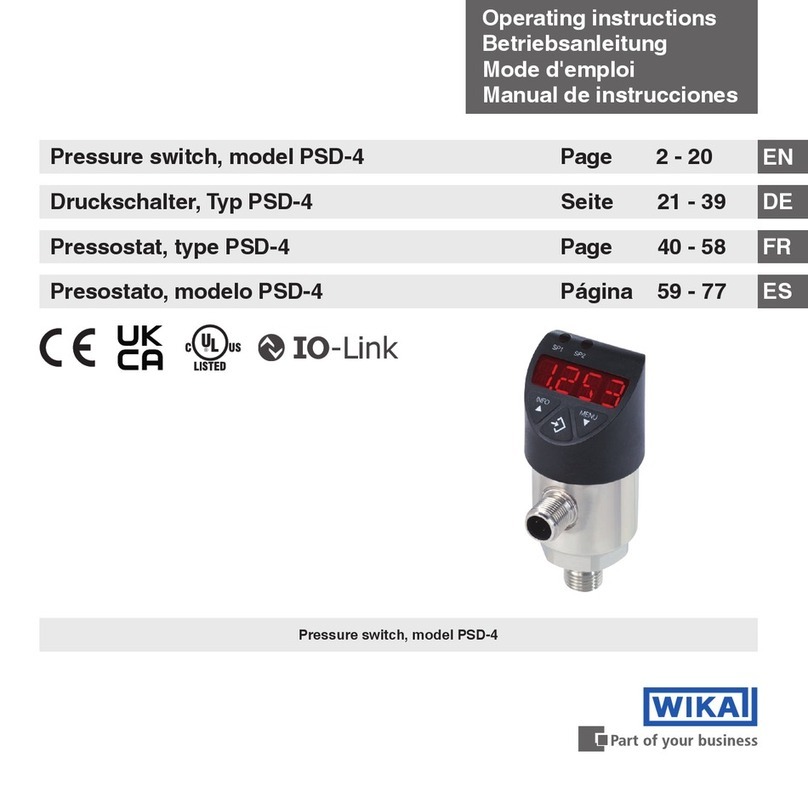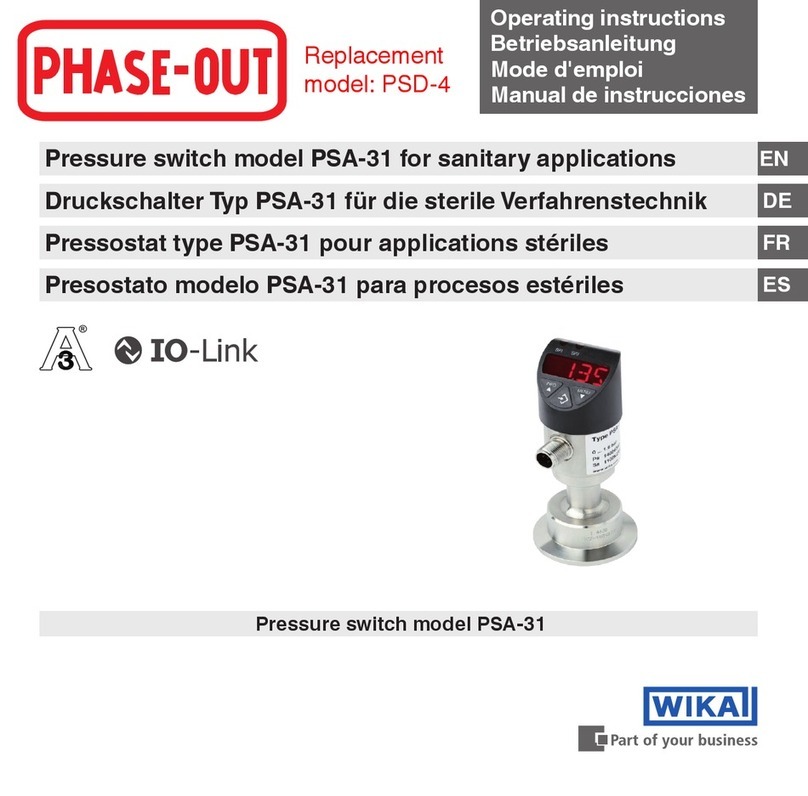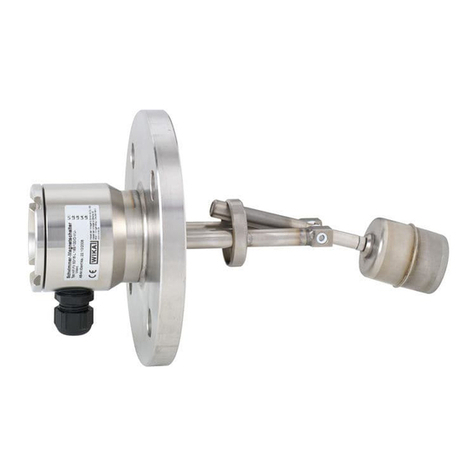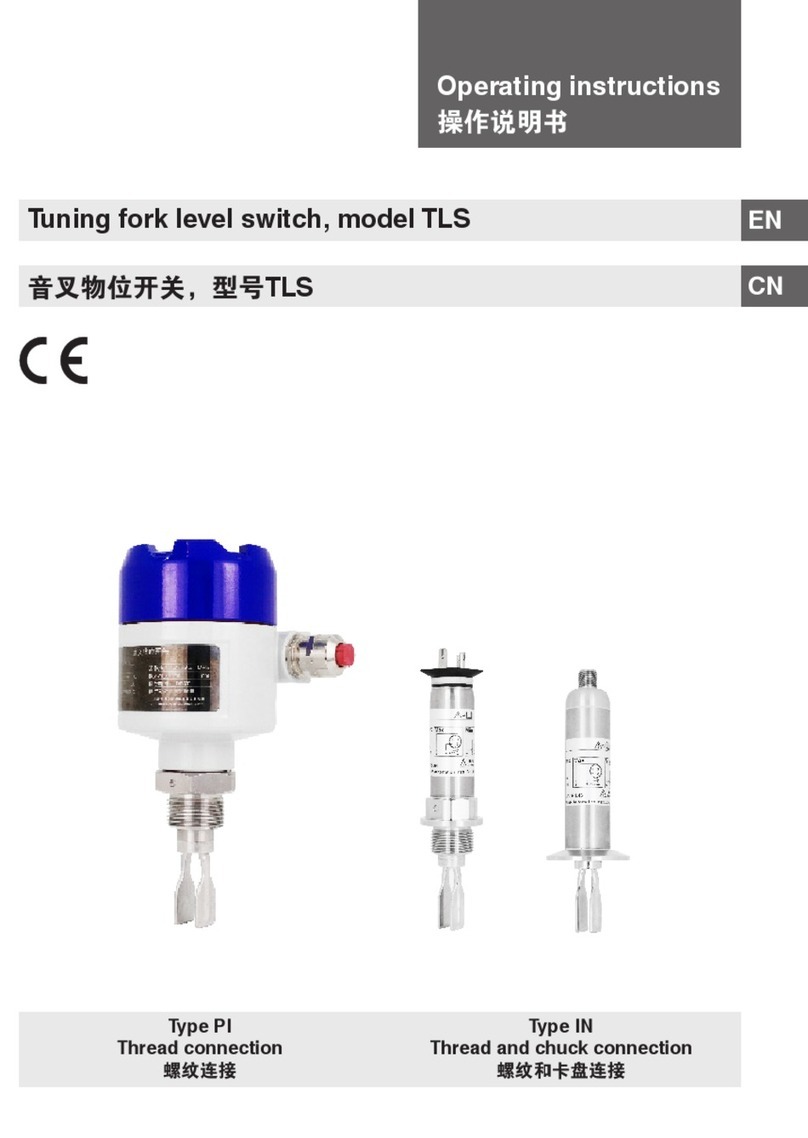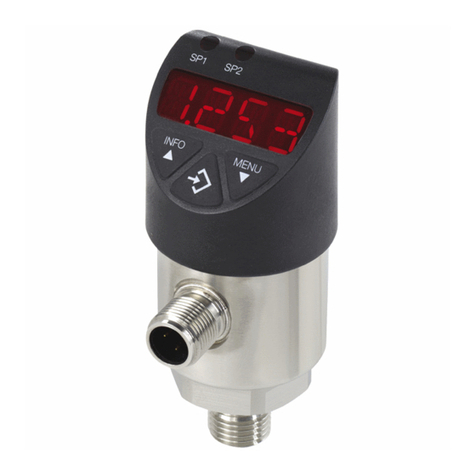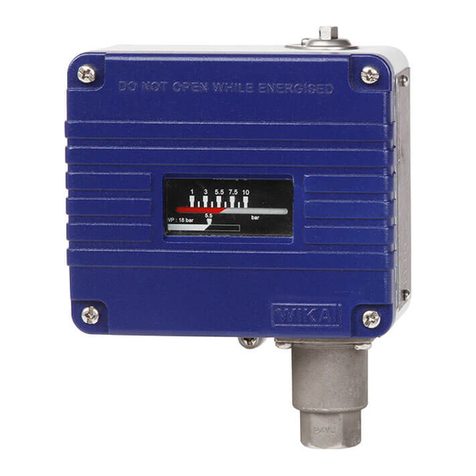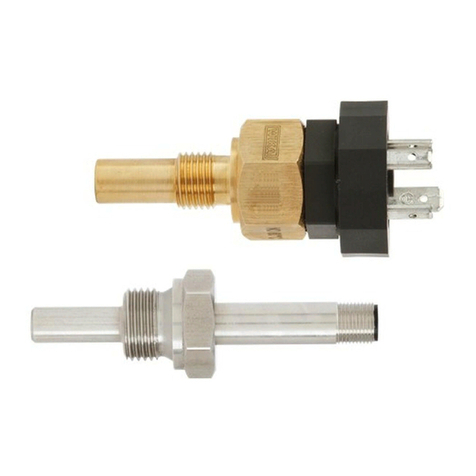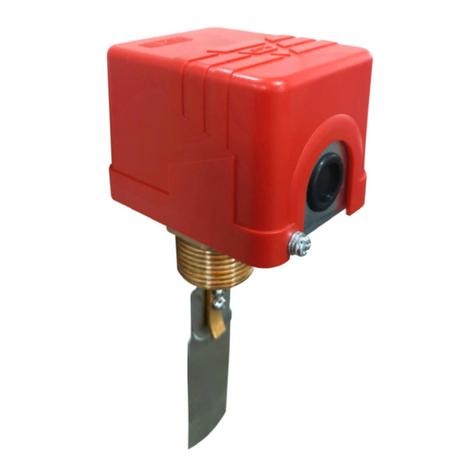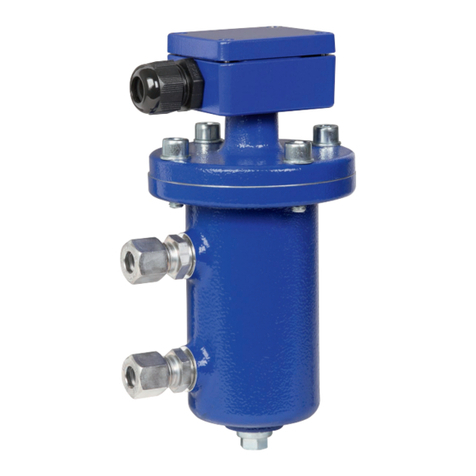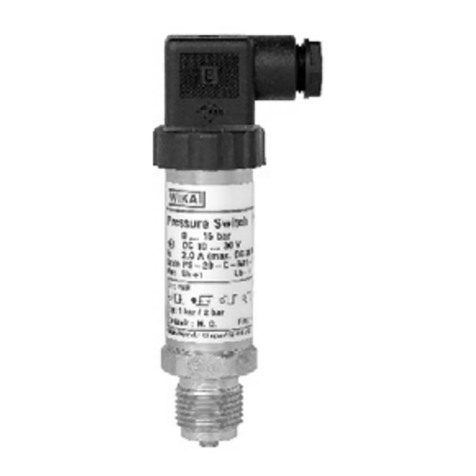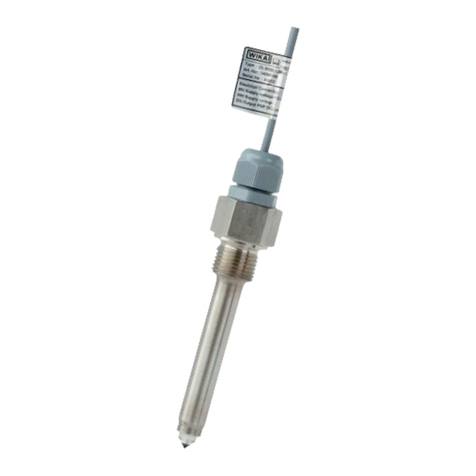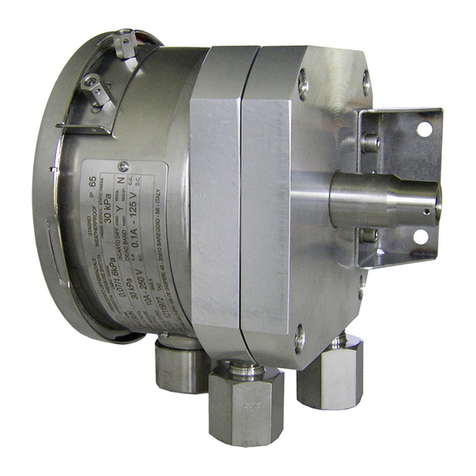6 of 9
bayonet and tighten it to assure the instrument degree of
protection
7.6GROUNDING CONNECTIONS
The instrument is supplied with two grounding connections, one
external and one internal. The connections are suitable for a
earthing wires of 4 mm2section (fig. 2).
8. INSTRUMENT PLUMBING
Weatherproof pressure switches (Models DW)
The plumbing, aimed as a guarantee against possible tampering
of the calibration and electrical connections, can be carried out
using a flexible steel wire (a) inserted into the holes in the locking
nut (c) and the bracket (d) provided for this purpose (see Fig. 4).
Flameproof pressure switches (Models DA)
Plumbing is not necessary as the cover is blocked with a
headless screw, the closure plugs of the adjustment screw
access holes are blocked by means of the internal blocking
device and the instrument does not have to be opened when
installed (see Fig. 5).
9. SAFETY INTEGRITY LEVEL (SIL) INSTALLATION
REQUIREMENTS
The pressureswitch has been evaluated as TypeA safety related
hardware. It has an hardware fault tolerance of 0 if it is used in
one out one configuration (1oo1). The installation has to be
designed to allow a proof test to detect dangerous undetected
fault using, as example, the following procedure:
- Take appropriate action to avoid a false trip
- Force the switch to reach a define max or min threshold
value and verify that output goes into the safe state.
- Force the switch to reach a define normal threshold value
and verify that output goes into the normal state.
- Repeat the check two times evaluating average set point
value and repeatability,
- Restore the loop to full operation
- Restore normal operation
10. PUTTING INTO OPERATION
The instrument comes into operation as soon as the root valves
are opened and then, afterwards, the service valve attached to
the instrument + (H) inlet pipe is opened, the by-pass valve
closed and the service valve attached to the instrument –(L) inlet
pipe is opened. Any possible drainage of the connection tubing
can be carried out by opening the drains positioned on the
instrument.
Do not dispose of the process fluid into the environment, if this
can cause pollution or damage to people
NOTE: if the instrument is used for level control in tanks under
pressure and is installed according to the diagram in Fig. 23
proceed as follows:
Close the root valves V1 and V2 open the valves V3 V4 V5 (the
service and by-pass valves). Fill with the process fluid, from plug
S positioned on the seal pot B, bleeding air from the plug S
positioned on the seal pot near the V2 valve. Then close S and
top up the liquid in B. Remove air from the breather plug S+ and
S- positioned on the instrument, topping up the liquid in B. Close
the plug SB and the by-pass valve V5 and open the root valves
V1 and V2. The instrument is ready for use.
If the instrument is installed according to Fig. 24 close the
root valves V1, V2 and V5, open the valves V3 and V4. Open the
draining D. Fill with the process fluid, from plug B bleeding air
from the plug S+. Vent carried out, the instrument will read
pressure
p=
• h1 corresponding to zero level in the vessel.
Close plugs S and D. First open valve V2 slowly, then V1. The
in-strument is ready to operate.
11. VISUAL INSPECTION
Periodically check the external condition of the enclosure. There
should be no trace of leakage of process fluid outside the
instrument.
In case of flameproof or intrinsic safety instruments, inspections
of the electrical installation are to be carried out also according
to customer procedures and at least in accordance with Standard
EN-60079-17.
The flameproof and the intrinsic safety instruments installed in
explosive atmospheres for the combustible dust presence, must
be periodically cleaned up externally in order to avoid dust
accumulating.
11.1INSTRUMENTS WITH PROCESS CONNECTION
COATED WITH PTFE
These instruments are usually installed on process with high
corrosion resistance requirements. To verify the condition of
PTFE the process connection is equipped with an inspection
hole. During the visual inspection check the absence of fluid. On
the contrary the instrument have to be replaced.
12. FUNCTIONAL VERIFICATION
This will be carried out according to the Customer’s control
procedures and because of their particular operating principle,
have to be functional inspected every year as minimum if used
as an alarm of max pressure
Models Dinstruments can be verified on the plant if installed as
illustrated in Fig. 17 or 18.
To avoid any risk it is recommended check the set point on site
without open the cover, without dismount the cable gland and
without unplugging the power cable.
The flameproof or intrinsic safety instruments may be checked
on site only if the apparatus used are suitable for explosive
atmosphere.
If this is not the case it is necessary remove the instrument from
the plant, and carry out the verification in a testing room.
If the verification of the set point is performed unplugging the
power cable from the terminal block it is recommended de-
energize the instrument to avoid any electrical hazard.
WARNING: Instrument models DA, flameproof.
Before open the cover or the cable gland check the absence of
explosive atmosphere and check that the instrument is not
energized.
Verification consists in check the calibration value and possibly
regulating the adjustment bush (see §5).
13. STOPPING AND DISMOUNTING
Before proceeding with these operations ensure that the plant or
machines have been put into the conditions foreseen to allow
these operations.
With reference to Figures 17 e 18
Remove the power supply (signal) from the electrical line. Close
the root valve (6) and open the drain. Remove the plug (2), open
the valve (3) and wait until the process fluid has drainedfrom the
tubing through the drain.
Do not dispose of the process fluid into the environment, if this
can cause pollution or damage to people.
Unscrew the three-piece joint (1).
WARNING: Instrument models DA, flameproof.
Before open the cover or the cable gland check the absence of
explosive atmosphere and check that the instrument is not
energized.
Unscrew the three-piece joint (11) (electrical cable tubing).
Remove the instrument cover and disconnect the electrical
cables from the terminal block and earth screws.
Remove the screws fixing the case to the panel (or pipe) and
remove the instrument, taking care to slide the electrical
conductors out from the case.
Mount instrument cover. Insulate and protect cables around, if
any. Temporarily plug pipes not connected to the instrument.
In case of flameproof instruments or intrinsic safetyit is
recommended to follow - at least –the standard IEC-60079-17
for the withdrawal from service of electrical apparatus.
14. DISPOSAL
The instruments are mainly made of stainless steel and
aluminium and therefore, once the electrical parts have been
dismounted and the parts coming into contact with fluids which
could be harmful to people or the environment have been
properly dealt with, they can be scrapped.












